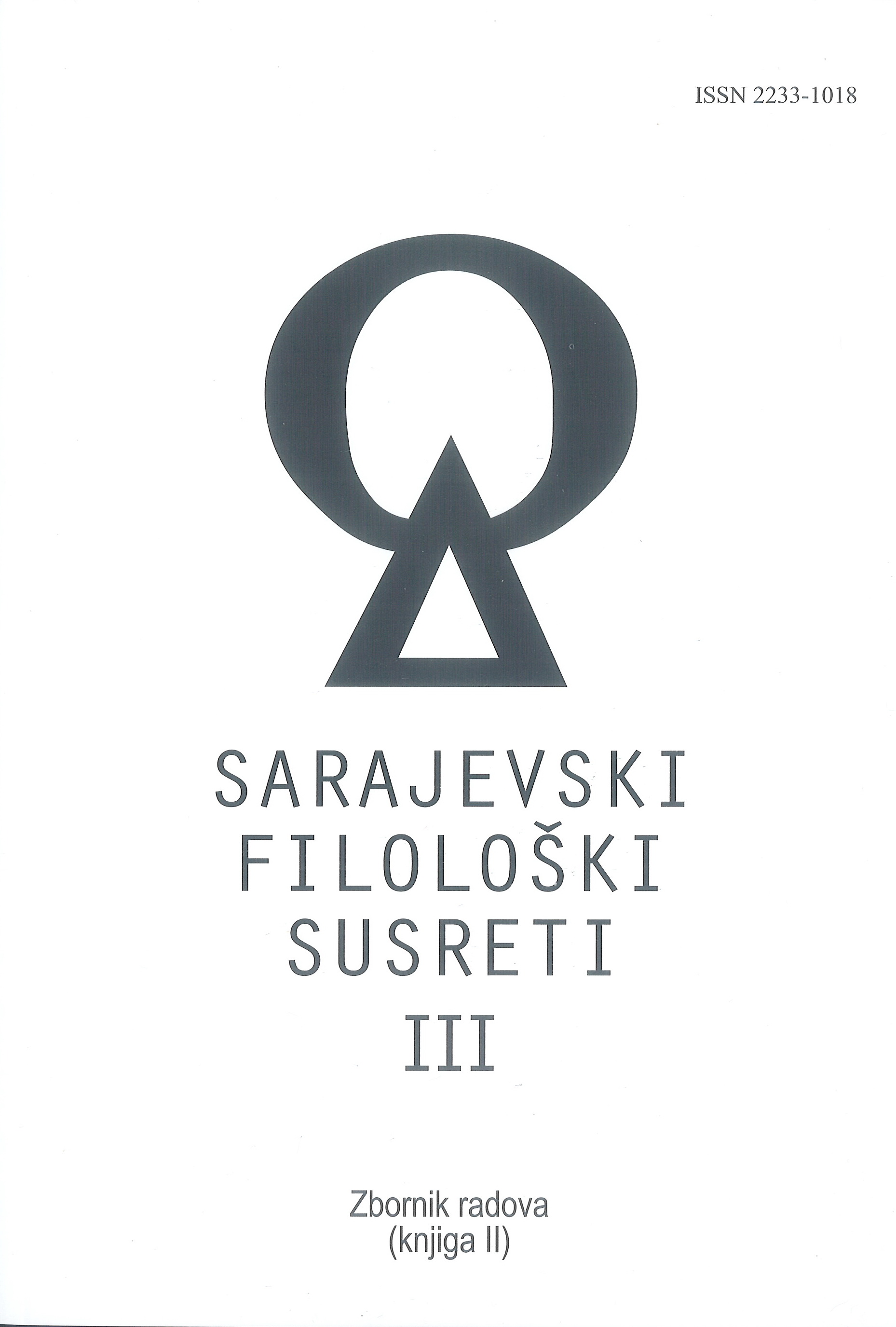RATNI HRONOTIP U LALIĆEVOJ TRILOGIJI
WAR CHRONOTOPE IN LALIC’S TRILOGY
Author(s): Tatjana Đurišić-BečanovićSubject(s): Language and Literature Studies, Montenegrine Literature, Serbian Literature, WW II and following years (1940 - 1949)
Published by: Bosansko filološko društvo
Keywords: war chronotope; revolution; spatial model of sublimity; spatial model of hauntedness; spatial redundancy; codes of behaviour; valour; proxemic norm; culture
Summary/Abstract: In Lalic’s trilogy, war and revolution chronotopes are inseparably intertwined, where as revolution is carrying the same semantic value as the Njegosian principle of active resistance to evil. In that way, revolution is being saturated by metatextual energy and the ethical principle impressing its fingerprint into all the elements of the narrative structure. Due to the influence of intertextual mechanisms, the ethical model of space becomes crucial in the patriarchal-warrior culture of Montenegro, which is especially emphasized by the very structure of the war chronotope. The main transgressor in Lalic’s novels, a hero with the most complex dynamic functions, whose transgressing behaviour is for the greatest part caused by the war chronotope, is Lado Tajovic, as he is most drastically violating the norms and is most persistent in ignoring all bans of both the tribal and the communist in the culture. In Lelejska gora, Lado Tajovic, influenced by the war chronotope, abandons the safety of home and subjects to spatial codes of Leleian hauntedness, which allow him to express fury and aggressiveness while the animalistic and instinctive energy of the subconscious materialize as the main driving forces of his behaviour.
Journal: Sarajevski filološki susreti: zbornik radova
- Issue Year: 3/2016
- Issue No: 2
- Page Range: 216-234
- Page Count: 19
- Language: Serbian

